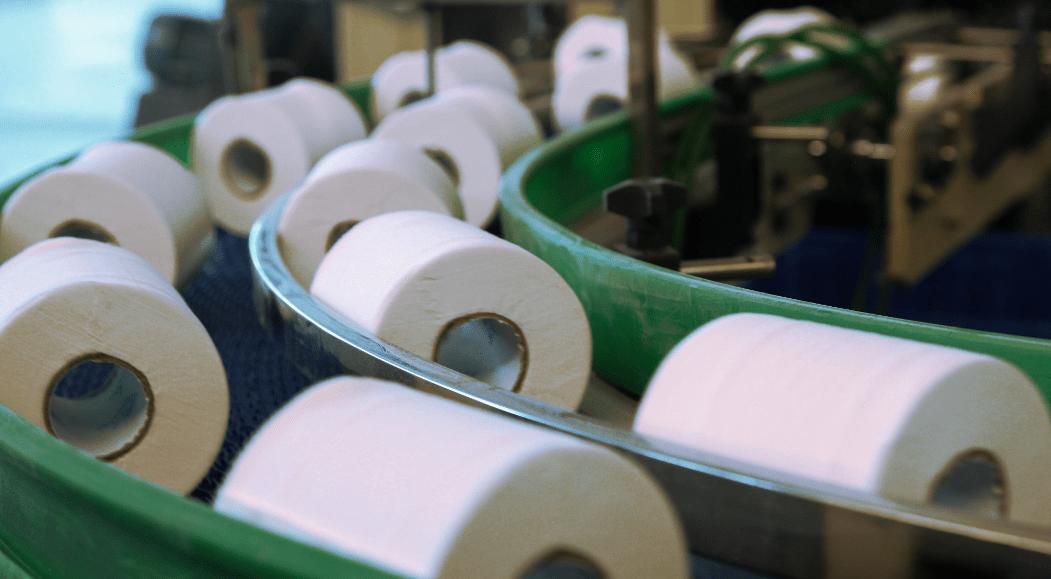Seasonal Analysis of Paper Pulp
Analyzing the patterns of futures trends is an essential part of research, with seasonal analysis being a fundamental aspect of commodities. As a traded market commodity, pulp’s supply and demand are closely related to seasons, which in turn affects the direction of its price movements. This report investigates the seasonal patterns of pulp, approaching from both quantitative and qualitative perspectives. By analyzing its seasonal characteristics, we can anticipate the trends and expectations for pulp, aiding in the timing and trend analysis of its pricing.
Initially, we conduct graphical and statistical analyses of pulp futures prices and bleached softwood kraft pulp spot prices to summarize their patterns of fluctuation. However, this alone is insufficient to prove the robustness of its seasonality. We will further perform statistical tests on its seasonality to systematically verify its strength. Additionally, this paper explores the peak seasons of pulp supply and demand, delving into the industry characteristics of the pulp commodity.
According to statistical analysis, from 2019 to 2023, the main futures prices of pulp tend to experience seasonal rises in January, February, and November-December, while May and October show a higher probability of decline. From 2016 to 2023, spot prices are more likely to rise in January and August, with strong seasonal declines evident in May, June, and October. Further seasonal decomposition tests did not reveal any strong seasonal patterns.
From a supply and demand perspective, pulp demand experiences a minor peak season from March to June and a major peak season from September to December. The impact of demand on pulp futures trends is limited and should be judged in conjunction with other periodic factors. However, the off-peak and peak seasons do provide a bullish expectation, which, in a stable external environment, is conducive to the stability of pulp prices, offering certain support.
The research perspectives are based on historical patterns, which may become obsolete; the market may experience unexpected fluctuations.
Seasonal Analysis of Futures and Spot Prices
1. Analysis of Seasonal Fluctuation Patterns in Futures.
We select the daily closing prices of the main pulp futures contracts as our observation data, from December 2018 to December 2023. As seen in Figure 1, in the first half of the year, 3 out of 5 years showed a pattern of rising and then falling prices, with the price center shifting by the end of the first half. Similarly, in the second half of the year, 4 out of 5 years formed a minor peak. Thus, graphically, there is an 80% probability of two seasonal fluctuations occurring each year, one in each half. The peak months of each fluctuation are not fixed, and the timing of the rises and falls varies with the peaks.
Further, we calculate the daily price changes and statistically analyze these fluctuations by month over the past five years. By calculating the probabilities of increases and decreases, the relative ratio serves as an indicator of the strength of monthly fluctuations. A ratio close to 1 indicates no clear trend of increase or decrease. A higher ratio suggests a predominance of rising days, while a lower ratio indicates more declining days. Table 1 shows that January and February have many rising days, with July, November, and December also showing many increases. March, April, May, June, and October have a stronger probability of daily declines.

| Month | Rising days | Down days | Total days | Probability of rising | Probability of decline | Rise: Fall |
| 1moon | 55 | 51 | 109 | 50.46% | 46.79% | 1.0784 |
| February | 44 | 40 | 86 | 51.16% | 46.51% | 1.1000 |
| March | 49 | 62 | 112 | 43.75% | 55.36% | 0.7903 |
| April | 46 | 55 | 101 | 45.54% | 54.46% | 0.8364 |
| May | 42 | 48 | 95 | 44.21% | 50.53% | 0.8750 |
| June | 44 | 54 | 101 | 43.56% | 53.47% | 0.8148 |
| July | 64 | 45 | 110 | 58.18% | 40.91% | 1.4222 |
| August | 56 | 54 | 111 | 50.45% | 48.65% | 1.0370 |
| September | 52 | 49 | 103 | 50.49% | 47.57% | 1.0612 |
| October | 32 | 48 | 83 | 38.55% | 57.83% | 0.6667 |
| November | 60 | 49 | 111 | 54.05% | 44.14% | 1.2245 |
| December | 75 | 53 | 131 | 57.25% | 40.40% | 1.4151 |
Table 1 provides statistics on the number of rising and falling days in futures by month.
Besides, the final monthly price changes are also important indicators. Most days rising in a month does not necessarily mean the month will end higher, but months with a higher probability of rising, barring extreme declines, are expected to show a monthly increase. Therefore, we list the monthly price changes for each year, calculate the average for the same month, and also calculate the highest monthly increase and the lowest monthly decrease, as seen in Figure 2. It is evident that in months where an increase is anticipated, January, February, July, November, and December have a positive average monthly change, and the lowest monthly decrease is often small. In months predicted to decline, March, May, and October have a negative average monthly change, and the highest monthly increase is also low. April has a higher maximum monthly increase, and June’s changes are small, indicating they are not stable declining months.
Extreme fluctuations within the month are also factors to consider. We calculate the highest and lowest monthly price changes and plot them as scatter points in Figure It is noticeable that in months where an increase is expected, July experiences significant mid-month volatility. Similarly, March also shows a significant increase, making March and July months without stable fluctuation patterns.
| Monthly price increases and decreases of pulp | |||||
| Month/Year | 2019 | 2020 | 2021 | 2022 | 2023 |
| January | 8.87 | -1.04 | 17.62 | 4.90 | 2.41 |
| February | 3.74 | -2.32 | 1224 | 8.72 | -4.73 |
| March | -4.31 | 0.94 | -1079.00 | 1.35 | -14.10 |
| April | -0.57 | -0.53 | 5.65 | 7.51 | -10.60 |
| May | -7.94 | -2.71 | -12.17 | -3.62 | 0.99 |
| June | -4.40 | 0.14 | -1.02 | -2.08 | 1.29 |
| July | -1.00 | -0.18 | 1.53 | 4.90 | 5.81 |
| August | 3.30 | 13.03 | -4.03 | -7.38 | 1.89 |
| September | -1.44 | -6.84 | -4.32 | 3.95 | 11.70 |
| October | -0.21 | -0.88 | -14.89 | -2.88 | -3.46 |
| November | -4.47 | 5.49 | 15.33 | 5.34 | √- |
| December | 3.23 | 18.33 | 7.41 | -3.36 | 0.25 |
Table 2 details the monthly price changes of pulp.

In summary, the graphical analysis of futures suggests that both halves of the year are likely to experience a rise, but the peak month and duration of the trend are not fixed. Monthly statistics indicate that January, February, November, and December are more likely to see seasonal increases, while May and October are more likely to experience seasonal declines.
2. Analysis of Seasonal Fluctuation Patterns in Spot Prices
Similarly, we select the historical prices of softwood pulp spot (Silver Star) as our data, observing from 2016 to 2023. Figure 3 shows that the first half of the year lacks a clear seasonal trend, with varying price structures; in the second half of the year, 5 out of 8 years experience a rise from July to October, with the price center also moving upward.
We then calculate the number of rising and falling days each month and their probabilities. Table 3 shows that about half the days in each month see price changes, and within these changing days, we calculate the ratio of rising to falling probabilities to gauge the general direction of monthly fluctuations. As before, a ratio closer to 1 indicates no clear trend, a higher ratio suggests a greater probability of increase, and a lower ratio indicates a greater probability of decrease. Therefore, January, February, and August have a higher likelihood of rising, while March to June and September to November are more likely to decline.
历史价格-图3针叶浆(银星)历史价格.png)
| Month | Rising days | Down days | Total change days | Probability of rising | Probability of decline | Rise: Fall |
| January | 35 | 25 | 148 | 23.65% | 16.89% | 1.4000 |
| February | 31 | 26 | 145 | 21.38% | 17.93% | 1.1923 |
| March | 27 | 81 | 180 | 15.00% | 45.00% | 0.3333 |
| April | 44 | 64 | 166 | 26.51% | 38.55% | 0.6875 |
| May | 31 | 64 | 164 | 18.90% | 39.02% | 0.4844 |
| June | 14 | 55 | 166 | 8.43% | 33.13% | 0.2545 |
| July | 52 | 53 | 174 | 29.89% | 30.46% | 0.9811 |
| August | 65 | 28 | 180 | 36.11% | 15.56% | 2.3214 |
| September | 37 | 52 | 171 | 21.64% | 30.41% | 0.7115 |
| October | 27 | 33 | 142 | 19.01% | 23.24% | 0.8182 |
| November | 35 | 49 | 174 | 20.11% | 28.16% | 0.1143 |
| December | 49 | 53 | 175 | 28.00% | 30.29% | 0.9245 |
Table 3 provides statistics on the number of rising and falling days for softwood pulp (Silver Star) by month.
Similarly, the monthly price changes and their maximum and minimum values are calculated and plotted. Figure 4 reveals that in months with a higher probability of increase, February has a significant lowest monthly decrease, indicating severe volatility, thus excluding February from having a clear seasonal rising trend. April, September, and November also have smaller rise-fall ratios, but the average monthly change and extreme values reveal high maximum monthly increases and low minimum monthly decreases, with significant volatility. Their average monthly declines are close to 0 or clearly positive, so April cannot be considered to have strong seasonal decline characteristics.
Further considering extreme cases, we calculate the highest and lowest monthly price changes and plot them as scatter points. We find that March’s highest increase approaches 10%, indicating significant upward volatility, thus excluding March as well, often being a fluctuating month.
| Monthly price increases and decreases of bleached needle pulp (Silver Star) | ||||||||
| Month/ Year | 2016 | 2017 | 2018 | 2019 | 2020 | 2021 | 2022 | 2023 |
| January | -0.10 | 2.14 | -1.75 | 0.79 | 0 | 15.67 | 0.84 | -0.68 |
| February | 2.85 | -1.34 | 1.54 | 0 | 10.15 | 9.53 | -7.10 | |
| March | -0.91 | -2.91 | -2.34 | -3.26 | 1.12 | -7.89 | 3.72 | -13.35 |
| April | 2.67 | -167 | 0.13 | -3.20 | -0.89 | 7.20 | 4.29 | -14.44 |
| May | 0.62 | 0.27 | -1.65 | -8.01 | -2.50 | -11.78 | -0.70 | 2.87 |
| June | 0.70 | -0.75 | -2.07 | -9.15 | 0.00 | -1.57 | 1.40 | 0.00 |
| July | -1.38 | 2.63 | 0.98 | 0.76 | 0.69 | 0.79 | 0.69 | 3.70 |
| August | -0.02 | 26.29 | 7.15 | -2.37 | 7.69 | -199 | -0.69 | -0.91 |
| September | 0.70 | 4.74 | -3.58 | 1.10 | -3.88 | -2.44 | 4.75 | 13.70 |
| October | 0.27 | 5.55 | -1.08 | -1.10 | 0.00 | -17.49 | -1.33 | -3.25 |
| November | 1.97 | -1.04 | -7.85 | -1.79 | 4.30 | 6.64 | 23 | -4.22 |
| December | 7.53 | -4.03 | -9.49 | 0.68 | 16.46 | 8.78 | 0.58 | -0.87 |
月度涨跌幅统计-图4漂针浆(银星)月度涨跌幅统计.png)
Therefore, the line chart of spot prices indicates a clear upward trend in the second half of the year, moving the price center upward. Data statistics show that January and August have a higher probability of rising, with a majority of days seeing increases, and a positive average monthly change, with the maximum monthly decrease being small. In contrast, May, June, and October have a higher probability of decline, with a majority of days seeing decreases, a negative average monthly change, and a small maximum monthly increase.
3. Quantitative Statistical Features of Seasonal Characteristics in Futures and Spot Prices
Beyond the aforementioned methods, we require a more systematic approach to quantify the seasonal strength of the data. Here, we use time series decomposition to measure its seasonal strength. Time series decomposition smooths the data using LOESS regression (Figures 5 and 6), separating the trend, seasonality, and residuals.

价格时序分解.png)
We then estimate the seasonal strength using the decomposed seasonal and residual components, with the formula as follows:
\text{Seasonal Strength} = \max\left(0, 1 – \frac{\text{Variance of Residuals}}{\text{Variance of Seasonal Component}}\right)Seasonal Strength=max(0,1−Variance of Seasonal ComponentVariance of Residuals)
For data with strong seasonality, the trend-adjusted data should have greater fluctuations than the residuals, thus the ratio is relatively small. The reason for setting the minimum value at 0 and the maximum at the calculated value is that sometimes the seasonality is so weak that it is less than the variance of a random walk, which could result in negative values. To avoid this, we set 0 as the minimum value.
After calculation, the seasonal strength of the main pulp futures closing price is 0.51, and the spot price is 0.37. If the seasonal fluctuation is greater than its corresponding random walk, then the seasonality is strong, and the ratio is relatively small, indicating a higher seasonal strength. If this value is greater than 0.64, it suggests strong seasonality, necessitating the use of a seasonal difference filter. Therefore, both pulp futures prices and spot prices do not exhibit strong seasonal fluctuations.
Seasonal Analysis of Supply and Demand Factors
The seasonality of pulp itself is not pronounced; its seasonal factors mainly stem from the demand side and the seasonal patterns of various paper types. Pulp’s primary use, as the name suggests, is papermaking, which can be categorized into packaging paper, printing paper, household paper, and specialty paper. Specialty paper has a wide range of applications, and the consumption of household paper remains consistent throughout the year, showing no clear seasonal peaks. Therefore, the seasonal analysis of pulp downstream focuses mainly on printing and packaging paper.
The end demand for printing paper primarily comes from the printing and publishing industry, used for producing books, periodicals, and albums. The peak seasons for different types of printing paper vary. Coated paper peaks from March to June and September to December, coinciding with spring sales events and pre-year promotions. The tobacco industry sees a peak from March to May and October to December, and the beer industry from March to June, with increased demand for labels and packaging. Double offset paper peaks from March to May and September to December, driven by the stocking of textbooks for students, generating significant demand for this paper type. However, the production of printing paper in recent years has not shown a clear seasonal demand, often presenting a scenario where peak seasons are not as pronounced. With declining birth rates and the trend towards a paperless society, the seasonal characteristics of printing paper are gradually weakening.
Here is the translated and improved content: (Source: Shanghai Steel Union, Guohai Liangshi Futures Research Institute)



The primary paper type consumed in packaging paper is white card paper, which is mainly used for packaging various consumer goods. The general trend is a low demand during the early months of the year, coinciding with the Spring Festival, followed by a gradual monthly increase. Due to online shopping promotions such as “Double 11” and “Double 12,” coupled with the demand for gifts before the Mid-Autumn Festival and Spring Festival, the fourth quarter marks the peak of the year. Therefore, the peak season for white card paper demand is from September to December annually.
Consequently, the peak seasons for wood pulp paper types are from March to June and September to December, with the latter half of the year being stronger than the former. Typically, paper manufacturers stock up on raw materials in anticipation of the peak seasons, while during off-peak periods, purchases are driven by immediate needs.
III. Summary
Statistical analysis from 2019 to 2023 indicates that the main futures prices of pulp are likely to experience seasonal increases in January, February, and November-December, while May and October have a higher probability of decline. From 2016 to 2023, spot prices are more likely to rise in January and August, with strong seasonal declines in May, June, and October. Further seasonal decomposition tests did not reveal any strong seasonal patterns.
From a supply and demand perspective, there is a minor peak season for pulp demand from March to June and a major peak season from September to December. The influence of demand on pulp market trends is limited and should be considered in conjunction with other periodic factors. However, the seasonal fluctuations between off-peak and peak seasons create a bullish expectation. In a stable external environment, this is favorable for the stability of pulp prices, providing certain support to the market.
All Data source: Shanghai Steel Federation, Guohai Liangshi Futures Research Institute
People also Ask?
Is the paper industry seasonal?
What is the outlook for pulp and paper in 2024?
What is the outlook for the pulp and paper industry?
What are the 5 stages of paper making?






